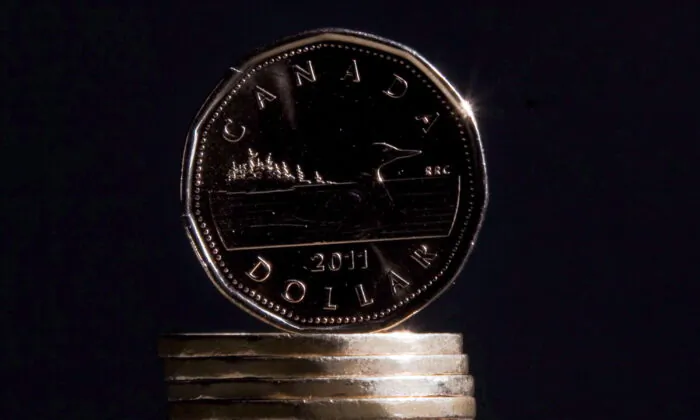
The Royal Canadian Mint tried to launch a digital currency venture and failed, losing millions in the process, according to the Crown corporation’s latest annual report.
Figures from that report were released on May 9, and Alex Reeves, a spokesman for the Mint, would not provide details, according to Blacklock’s Reporter.
“We have nothing to add. We do not segment the reporting of operating costs nor investments by business line,” Reeves said, adding that the information was considered “commercially confidential.”
The Mint did not respond to an inquiry by press time, but according to the Mint’s 2022 Annual Report, the government-owned currency manufacturer sold the MintChip, a custom-made digital currency, to NanoPay, a Toronto start-up, for a cash consideration of $5 million on closing and an $11 million secured promissory note, with a 4 percent interest rate.
It took the Mint two years to find a buyer, and it hired a U.S.-based firm, Boston Consulting Group, in efforts to sell. The government has never disclosed the net losses.
Payments were due semi-annually, and the principal amount was due on Dec. 16, 2022. The Mint said the principal “was not received.”
The report indicated that the Mint was “required to make a judgement with respect to the uncertainty over the collectability of the promissory note.”
“At December 31, 2022 and 2021, it was determined that no asset would be recorded in the consolidated financial statements and any additional future consideration related to interest and principal repayments would be recognized as other income upon receipt of cash,” said the annual report.
Effectively, the Mint wrote off $11 million, in addition to an estimated $29 million spent on research and development costs. Corporate records indicate the project cost the Mint at least $34.3 million.
When MintChip was first launched in 2012, the government said it was a “new era” in currency. The Mint filed eight patents, produced sales videos, doubled the number of research scientists on staff, and offered a $50,000 cash price for the development and design of a software app.
Then-CEO Ian Bennett said at the time that Canada was a pioneer by virtue of being “the only mint to have initiated research and development related to the evolution of physical currency.
A sales promotion for MintChip said: “Money as we know it is fine today, but tomorrow is a different story.” Consumers were told that MintChip was “better than cash since you can use it online.”
In 2014, the Mint sponsored an exhibit at a trade show in New York, hosted by the U.S. National Retail Federation, despite the program being disbanded in 2013 under a Bank of Canada (BOC) order.
In 2016, then-federal Finance Minister Bill Morneau removed the Mint’s ability to launch new ventures without the government’s approval.
“While the Mint operates in part on a commercial, profit-oriented basis, as a federal Crown corporation it is an instrument of public policy for which the Government is ultimately accountable to Parliament and Canadians,” Morneau wrote in a Letter of Expectations.
The BOC, as Canada’s central bank, has a legal monopoly over distribution of money, an authority provided under the 1934 Currency Act.
Official estimates suggest the BOC records $1.6 billion a year in revenue from circulation of banknotes.
Despite the failure of the MintChip, the Bank of Canada is currently working on a “central bank digital currency” or a “digital Canadian dollar.”
“It doesn’t exist yet, but we’re getting ready, in case one day Parliament and the Government of Canada ask us to issue one,” states the BOC website. Canadians have been told they can take part in an online survey before June 19 on the idea of “this new form of money.”
“This new form of money would be issued by the Bank of Canada and provide benefits similar to cash: it would be safe, accessible to everyone and private.
“However, a digital Canadian dollar would not replace cash—we will continue to supply bank notes as long as Canadians want to use them,” says the BOC.
